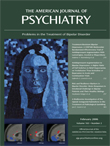QTc Prolongation and Torsades de Pointes in an Elderly Woman Taking Fluoxetine
Transient unexplained loss of conscience in Ms. A led to her admission. Routine physical and laboratory examinations revealed no abnormalities (e.g., ischemia, electrolyte disturbances) besides a left bundle branch block and a prolonged QTc interval (478 msec, corrected for QRS interval widening because of the left bundle branch block; reference <450 msec). Her medications at admission were acetylsalicylic acid, 30 mg/day, and fluoxetine, 20 mg/day (serum levels at admission: fluoxetine, 204 μg/liter; norfluoxetine, 138 μg/liter); fluoxetine had been started 6 months earlier. During the night, continuous ECG recordings revealed recurrent short episodes of torsades de pointes. Multiple syncopal episodes occurred before admission, each time resolving spontaneously, which had never been observed before the initiation of fluoxetine.Ms. A started having symptoms after the initiation of fluoxetine treatment and the documented pause-dependent polymorphic ventricular tachycardia characteristic of drug-induced QTc prolongation (1), which render fluoxetine use the most likely cause. Therefore, fluoxetine was discontinued. ECG recordings 2 and 8 months after fluoxetine discontinuation were normal apart from the left bundle branch block (QTc interval, 421 msec and 408 msec, respectively, corrected for the widening of the QRS interval). No further episodes of syncope or tachyarrhythmias were seen.
References
Information & Authors
Information
Published In
History
Authors
Metrics & Citations
Metrics
Citations
Export Citations
If you have the appropriate software installed, you can download article citation data to the citation manager of your choice. Simply select your manager software from the list below and click Download.
For more information or tips please see 'Downloading to a citation manager' in the Help menu.
There are no citations for this item
View Options
View options
PDF/ePub
View PDF/ePubGet Access
Login options
Already a subscriber? Access your subscription through your login credentials or your institution for full access to this article.
Personal login Institutional Login Open Athens loginNot a subscriber?
PsychiatryOnline subscription options offer access to the DSM-5-TR® library, books, journals, CME, and patient resources. This all-in-one virtual library provides psychiatrists and mental health professionals with key resources for diagnosis, treatment, research, and professional development.
Need more help? PsychiatryOnline Customer Service may be reached by emailing [email protected] or by calling 800-368-5777 (in the U.S.) or 703-907-7322 (outside the U.S.).

